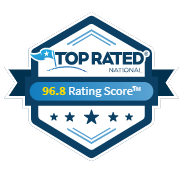Long symbols of love, dedication, and timeless elegance, diamonds have always been associated with life’s most important moments. Whether it's an engagement, anniversary, or personal milestone, choosing the right diamond can elevate the sentiment behind the occasion. But how do you ensure you're selecting the perfect diamond? The answer lies in understanding key factors that determine a diamond's value and beauty.
Why Choosing the Right Diamond Matters
Buying a diamond is not just a purchase; it’s an emotional and financial investment. Whether you opt for natural or lab-grown diamonds, understanding what affects a diamond’s brilliance, quality, and value will ensure you make a confident and meaningful choice. A 2 carat diamond ring or a 3 carat diamond ring, for instance, may look stunning—but without knowing its quality, the beauty might not last.
1. Cut
The cut of a diamond refers to how well it has been shaped and faceted. This directly influences how light reflects within the stone—affecting its sparkle and brilliance.
-
Excellent Cut: Maximum light return, brilliance, and fire.
-
Very Good Cut: Reflects most of the light that enters.
-
Good Cut: Still offers decent brilliance.
-
Fair to Poor Cut: Limited reflection, dull appearance.
Always prioritize cut over carat weight when budget is a constraint—it gives life to the diamond.
2. Color
Diamonds are graded on a D-Z scale, with D being completely colorless and Z having noticeable yellow or brown tints.
-
D-F: Colorless
-
G-J: Near Colorless
-
K-M: Faint Yellow
-
N-R: Very Light Yellow
-
S-Z: Light Yellow
Lab-grown diamonds often provide better color quality at a more affordable price.
3. Clarity
Clarity refers to the presence of inclusions (internal flaws) or blemishes (external flaws).
-
FL (Flawless)
-
IF (Internally Flawless)
-
VVS1, VVS2: Very Very Slightly Included
-
VS1, VS2: Very Slightly Included
-
SI1, SI2: Slightly Included
-
I1, I2, I3: Included
For excellent value, opt for VS1 or VS2—imperfections are often invisible to the naked eye.
4. Carat Weight
Carat indicates a diamond’s weight and indirectly its size.
While bigger might seem better, a well-cut smaller diamond can appear more dazzling than a larger poorly-cut one. Think about how it fits into your overall ring design and budget.
5. Shape
The shape of a diamond is about style and personal taste:
-
Round: Most brilliant and popular
-
Princess: Square, modern edge
-
Oval: Elongates the finger
-
Emerald: Elegant step-cut
-
Pear, Cushion, Marquise: Unique and trendy
Each shape interacts with light differently and can influence the perceived size of the diamond.
6. Certification
Always ensure your diamond is certified by a reputable lab like:
-
GIA (Gemological Institute of America)
-
IGI (International Gemological Institute)
A certificate provides details about the 4Cs and guarantees the diamond’s authenticity, especially important for lab-grown diamonds.
7. Budget
A clear budget helps narrow your options and guides trade-offs between size and quality. Lab-grown diamonds are typically 20–40% cheaper than natural ones, enabling better quality within your budget.
For example:
-
1 ct Natural Diamond = $5,000
-
1 ct Lab-Grown Diamond = $3,000
That difference allows for upgrades in color, cut, or setting.
Comparing In-Store vs. Online Diamond Shopping
| Aspect | In-Store Diamonds | Diamonds Online |
|---|---|---|
| Price | Higher due to overhead costs | Lower due to fewer expenses |
| Selection | Limited to store stock | Vast inventory |
| Convenience | Time-consuming, requires visit | Shop from home, 24/7 access |
| Transparency | May rely on salesperson | Detailed specs, reviews, videos |
| Quality Control | Can inspect in person | Rely on high-res images and certifications |
| Return Policy | Often strict | Flexible (30-90 days) |
| Customization | Limited | Extensive options |
| Shipping/Insurance | Immediate pickup | Secure, insured, often free |
Online platforms provide exceptional convenience, while in-store offers tactile experience. Choose based on your comfort and buying preferences.
Working with Reputable Jewelers
Choose jewelers who:
-
Offer certified diamonds
-
Are transparent with pricing
-
Provide customization options
-
Have strong customer service
Trusted brands like Carat Diamonds provide peace of mind with ethical sourcing and top-tier customer experience.
Additional Tips for Diamond Shopping
-
Use 10x magnification to check for inclusions.
-
Compare loose diamonds before setting.
-
Check light performance using specialized tools or in-store demo lighting.
-
Understand the return policy.
Conclusion
When it comes to buying a diamond, the process can be overwhelming—but with the right knowledge, it becomes a rewarding journey. Remember the 7 key factors—cut, color, clarity, carat, shape, certification, and budget—and you’re well on your way to selecting the perfect gem.
Whether it’s a classic round solitaire or a custom oval halo ring, your diamond should reflect your story.
The Best Place to Buy a Diamond: Carat Diamonds
Carat Diamonds combines quality, education, and trust. Whether you're choosing a 2 carat lab-grown diamond ring or a 3 carat natural stone, they offer certified gems with unmatched brilliance and fair pricing.
Your perfect diamond isn’t just found—it’s chosen with clarity.
FAQs
How do I start the process to buy a diamond?
Start by setting a budget and learning about the 4Cs. Then decide on the purpose—engagement ring, earrings, etc. Choose certified, reputable sellers like Carat Diamonds.
What is the best place to Buying a Diamond?
Online certified platforms like Carat Diamonds offer excellent quality, value, and customer service.
What are lab-grown diamonds, and should I consider them?
Yes, lab-grown diamonds are real diamonds, just made in a lab. They offer the same beauty at a better price and are eco-friendly.
How do I ensure I’m buying a certified diamond?
Buy only from trusted sellers who provide certificates from labs like GIA or IGI.
How do I maintain the value of my diamond after purchasing?
Keep it clean with mild soap and water, store it safely, and have it professionally checked yearly.











